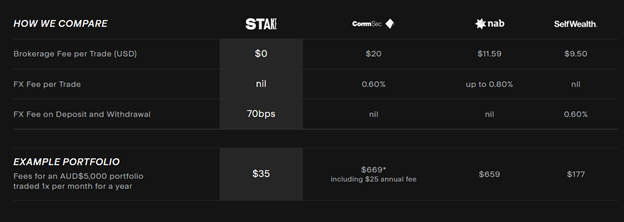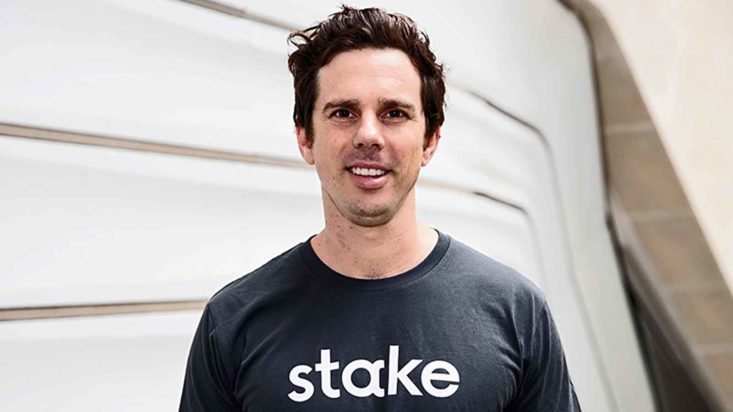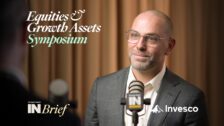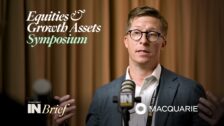SMSFs on the horizon for trading platform Stake
Earlier this year, an army of small-time millennial traders successfully shook-up the US stock market and took on Wall Street. A shorting attack on a company called GameStop (NYSE: GME), led by hedge funds, was outflanked by a frenzied buying assault from an online crowd centred on the the WallStreetBets “subreddit” chat-forum on Reddit. It triggered a short-covering rally that sent the share price through the roof.
In the background, facilitating these trades, is a trading platform named Robinhood. The app is the first of its kind that offers “commission-free” trades. The app was also designed for its simplicity and ease of use, to help new investors succeed in a complicated market.
And then Covid-19 hit, opening the floodgates to 13 million amateur stock traders, stuck at home, to discover a whole new world of investing. The US stock market is often relatively inaccessible due to high stock prices (one Amazon share currently costs US$3,448) but with Robinhood’s fractional trading, this was no longer a problem. Due to the cancellation of global sporting events, some say Robinhood replaced sports betting in many ways.
Back at home, the popular US trading app is yet to launch here. So, Australians have backed a locally developed app named Stake, that offers free share trading. It differentiates itself by focusing on US share trading access rather than zero-commission trades. That has given Stake a different demographic. Stake is attracting more experienced investors, whereas Robinhood attracts a millennial subculture, the most famous example of which revolves around the now-famous WallStreetBets, famous for taking-down hedge funds and Wall Street brokers (the real story is not so simple.) Stake has been expanding exponentially and has been dubbed the “Robinhood of Australia”.
According to Stake CEO, Matt Leibowitz, accessing markets outside Australia has always been super-difficult. Investing directly into great names like Apple, Amazon and Google was more of a novelty rather than a reality. And so, Stake was born.
Leibowitz’s background is in law and finance, having worked at Allens. He later became a trader at Optiver where he ran the index trading team, the equities team and the institutional trading desks for the business.
When he returned home from Chicago, he was surprised by how difficult retail share broking access was to the US market and the excessive fees charged. “I felt that with my experience and passion, that I could build the solution for the market here in Australia, and also for others around the world who were locked-out of the dynamic opportunities in the US,” Leibowitz says. He describes Stake as “a new-generation online brokerage.”
“We have a desktop and mobile platform that enables Australians to easily buy and sell US stocks directly, without paying fees on trades. We allow users to gain access to the US financial markets with $0 brokerage fees (which is very standard in the US). The platform is currently exclusively for US stocks, but we’re delving into the Australian equities market soon,” says Leibowitz.
Stake makes it simpler and cheaper to trade US stocks. From technology that enables people to set up a fully regulated US brokerage account in under five minutes (including the digital completion of their US Tax Form) to not charging any fees on trades, Stake is simply born different to other offerings. Additionally, Stake’s platform is intuitive and seamless, suitable no matter the level of the user’s trading experience. It’s user-friendly enough for people to familiarise themselves with the features in just a few minutes, and start trading right away.
At the moment, the US market is where it’s at, especially for those who like to trade a lot. Leibowitz says “Young Australian investors are savvy and on the hunt for opportunity. And when it comes to trading shares, there is no bigger opportunity than the US market. The amount of money that moves through a Tesla stock in a single day can be up to six times more than the amount of money moving through the entire ASX in a day. Beyond this, it is the depth and breadth of companies to which traders have access on the US stock exchanges, world-leading companies across an enormous range of sectors. We’ve found that young Australians flock to trade in companies they know and use every single day. The likes of Apple, Netflix, Google and many more.”

Business model
Robinhood makes money by essentially referring customers to third parties and profiting from the data on their platform behaviour. The proper description is payments for order flow (PFOF). Robinhood raked in US$91 million ($121.3 million) in this manner last year. In Australia, these functions are performed by the ASX, so this channel of revenue doesn’t exist. In its place, Stake generates revenue through foreign exchange (FX) fees charged on international transfers such as Australian to US dollars. It also charges an optional fee for a premium subscription. Looking at the snippet from the Stake website, it clearly states “$0 brokerage fees and No FX fees per trade”.
The obvious question is, “Is this really brokerage-free trading?” Not quite. On closer inspection, there is a 0.70% fee on deposit and withdrawal of funds. Isn’t this a fee?

To use the platform, funds need to be deposited from your bank account and converted into US dollars. Unless one has a US bank account and address, this FX fee cannot be bypassed. The FX fees are not cheap by any means. We asked Leibowitz, ‘is there a catch?’ He replied, “No catch. Stake does not charge any fees on trades, instead, it makes money in three ways. Firstly, it takes a FX fee when customers transfer money between AUD (or local currency) to USD. Secondly, Stake earns interest on any uninvested funds sitting in accounts. And finally, Stake offers the option of a pay-per-month premium pack, Stake Black, which gives customers access to more sophistication to supercharge their investing.”
The app also allows investors to buy and sell using fractional shares, which are divisions of the share price to more manageable amounts. For example, one Class A share of (Warren Buffett’s investment company) Berkshire Hathaway currently changes hands on the market at US$420,000. But on Stake, an investor can buy or sell US$1,000 parcels of that one stock. “The fractional shares are held in your name with our broker and kept in custody by the custodian (Velox Clearing LLC & Citibank), so full beneficial interest (things like dividends etc.) are assigned to you,” says Leibowitz.
Looking into the future, Stake aims “to jazz-up the outdated superannuation space with a modern self-managed super fund (SMSF) product that’s currently in beta testing (the process where a group of real users use the product in a test, to uncover any ‘bugs’ or problems before a general release.) “After looking at our Australia customer base, we found that customers want more control over their superannuation and to be able to invest on their own terms. Yet, many see an enormous barrier in establishing a self-managed super fund (SMSF),” says Leibowitz. “Where new fintechs such as Spaceship and Grow have failed, our presence in the market and large existing Australian customer base gives us a strong platform to be a force for change in the industry.”
From trading so far, Stake is seeing these interesting trends among its users:
- Tesla is the most traded stock on Stake. Over US$776 million ($1.03 billion) has been traded in TSLA on Stake over the past 12 months
- Coinbase was the biggest IPO ever on Stake. More than US$8.6 million ($11.5 million) was traded by Australians in Coinbase in the week following the IPO
- Airbnb was the biggest IPO on Stake in 2020 with US$3.6 million ($4.8 million) in traded value
- Netflix and Square are consistently in the top ten traded stocks on Stake. Over US$60 million ($80 million) was traded in both companies during 2020.











